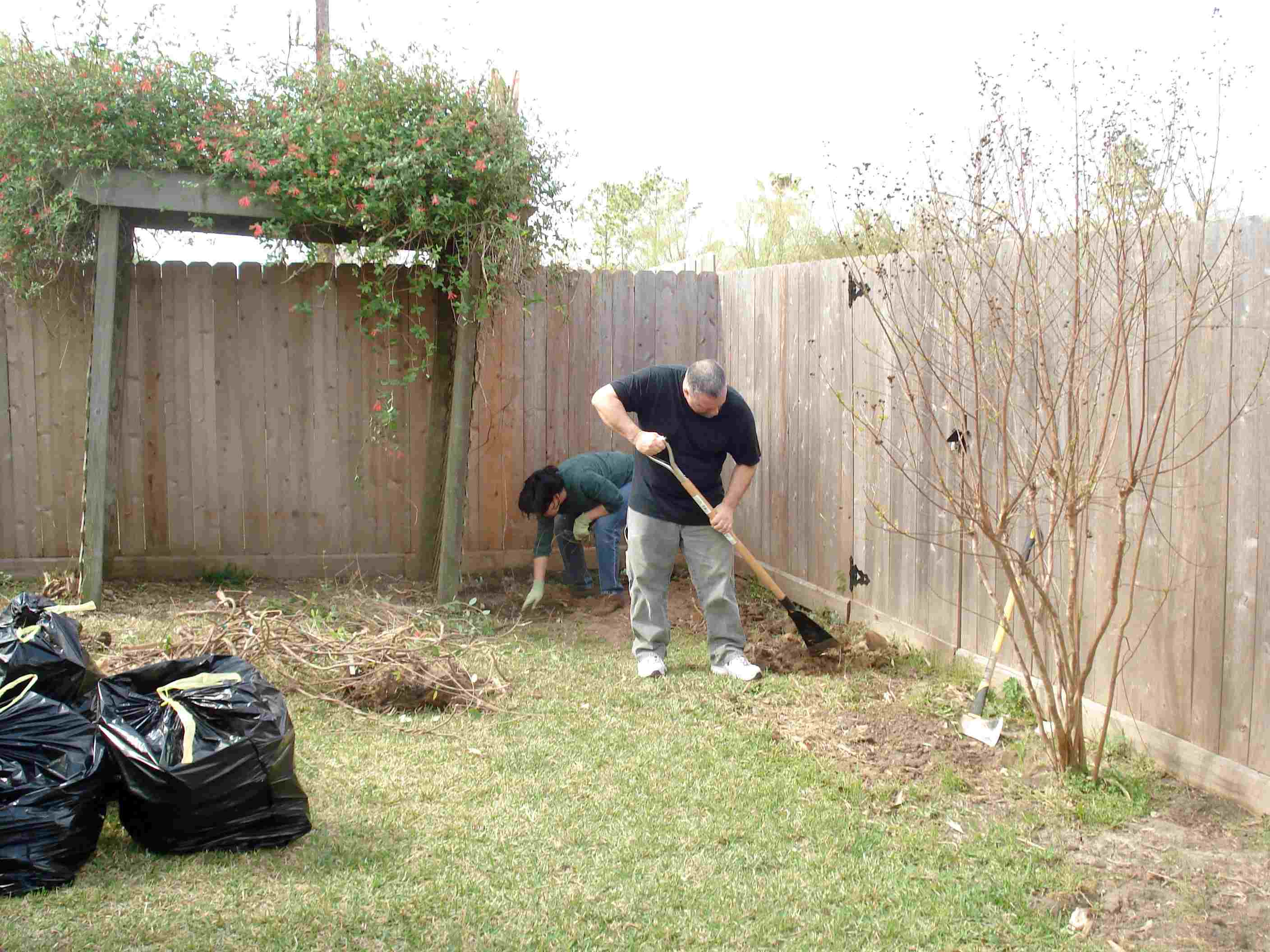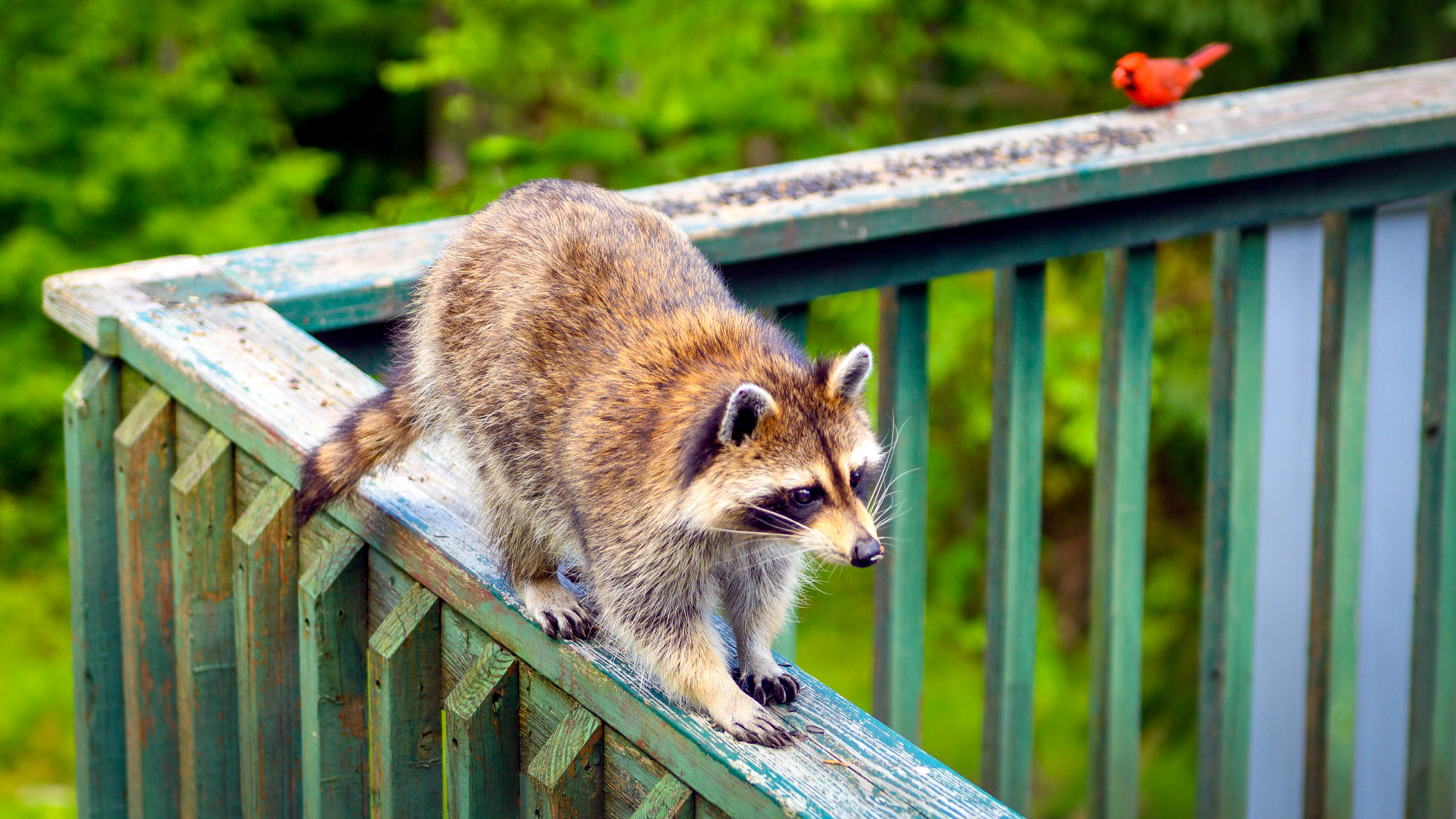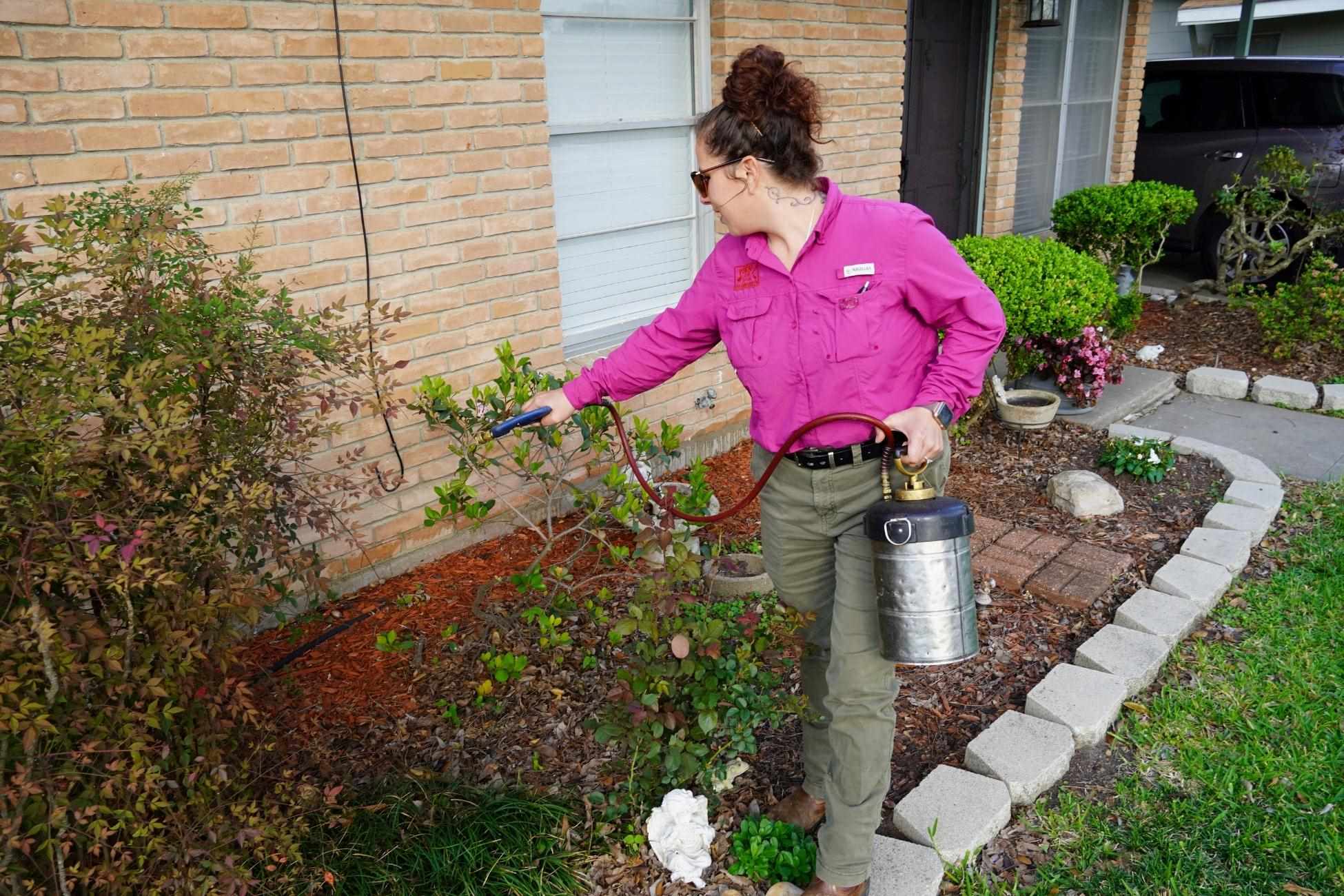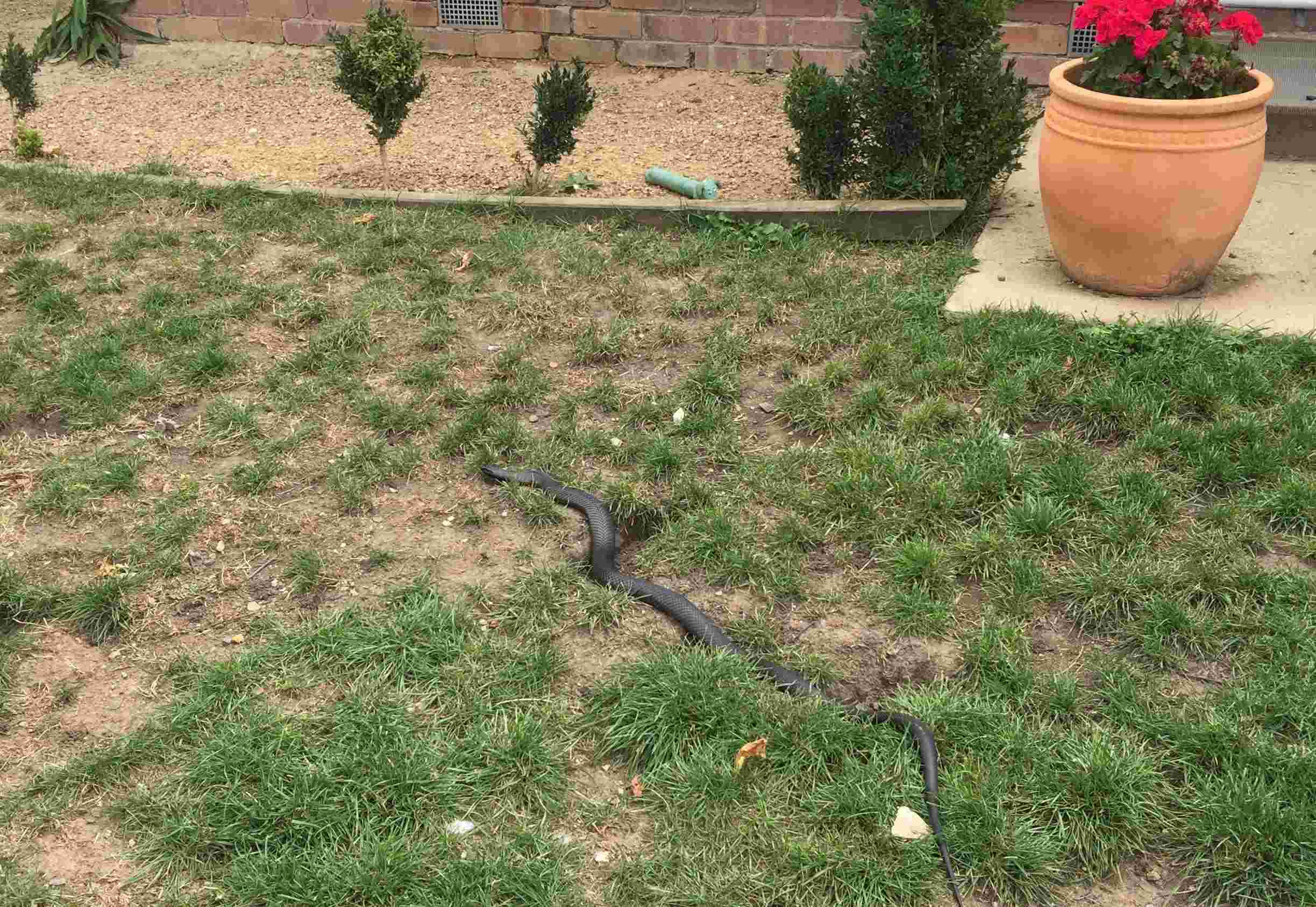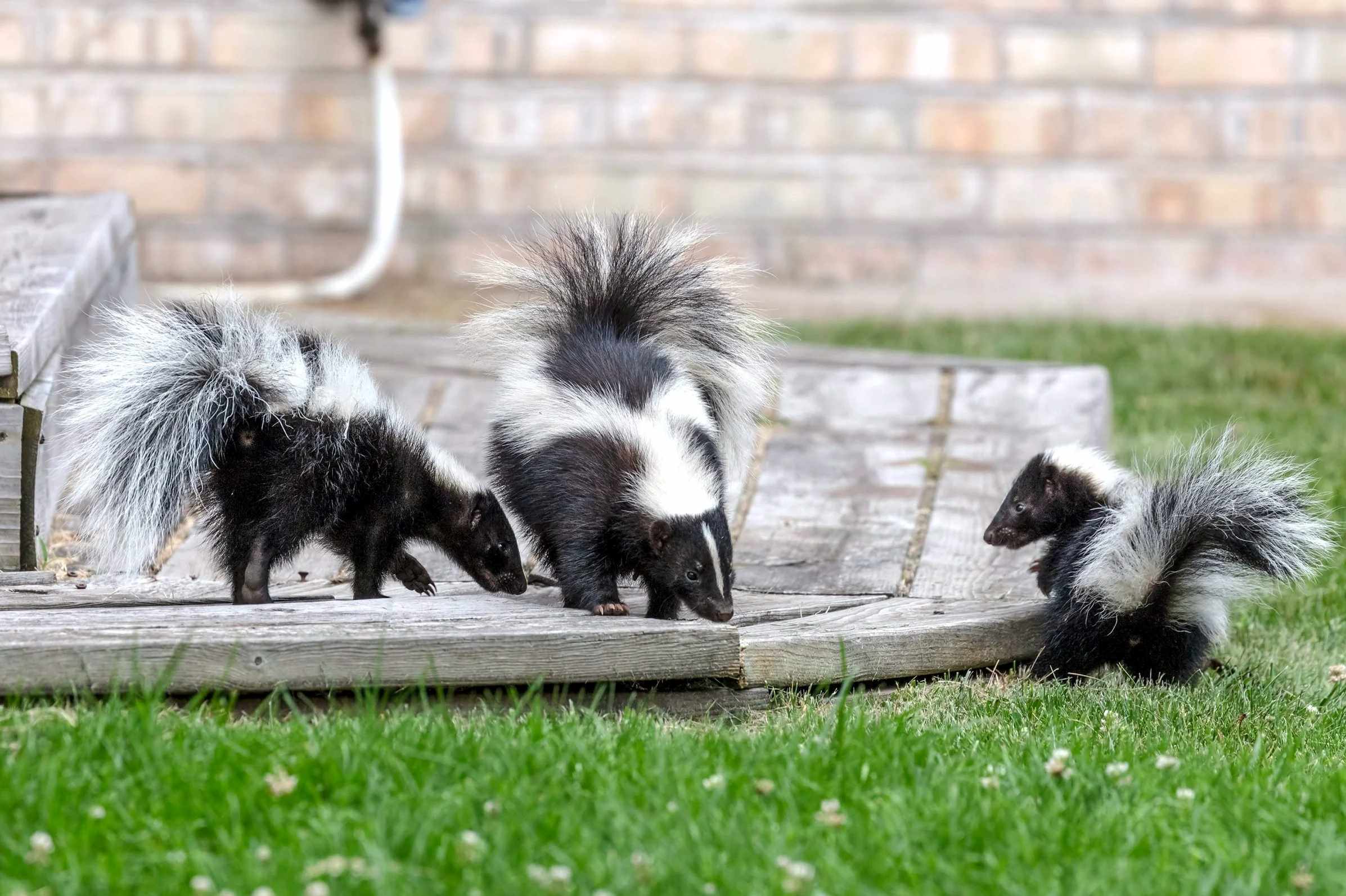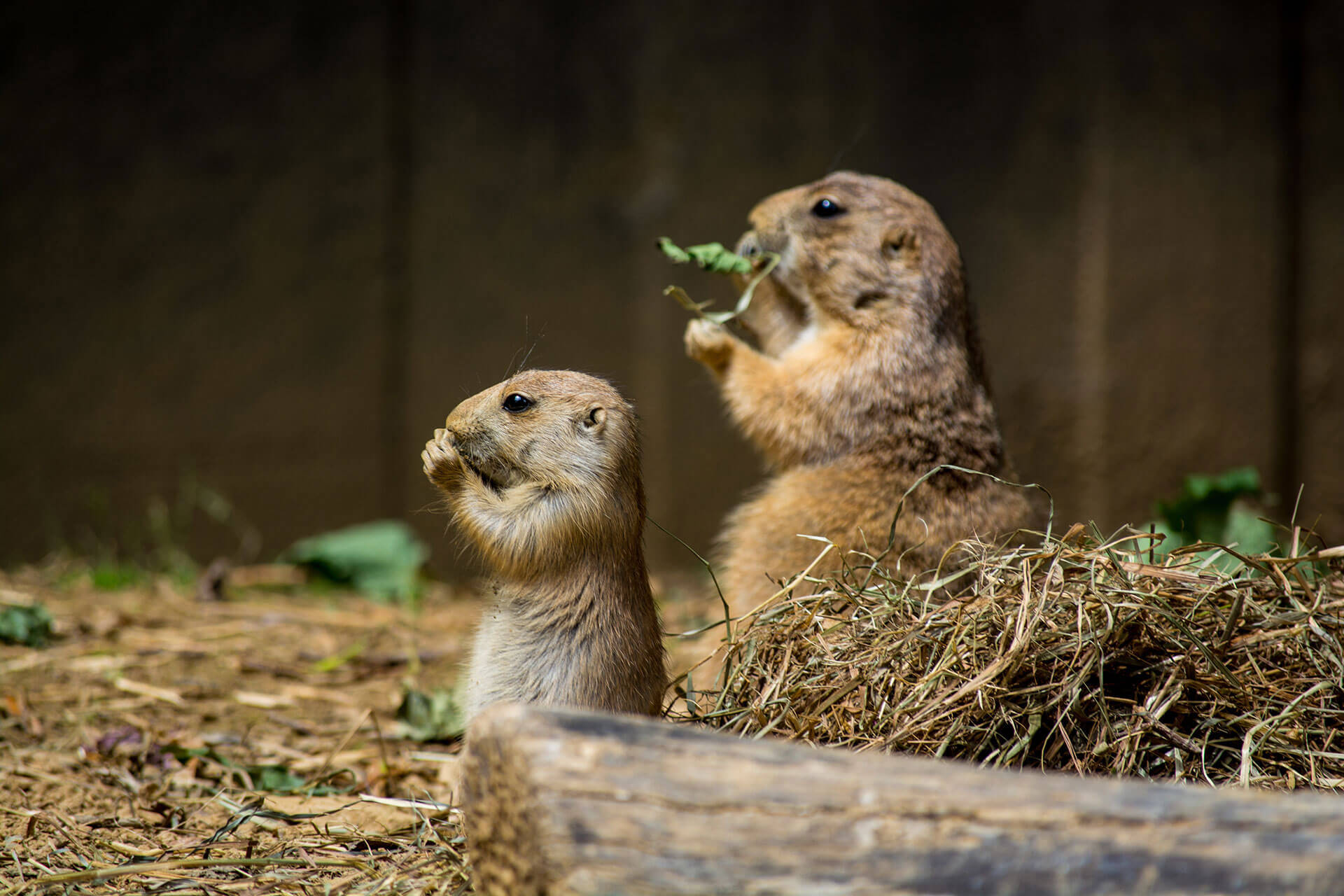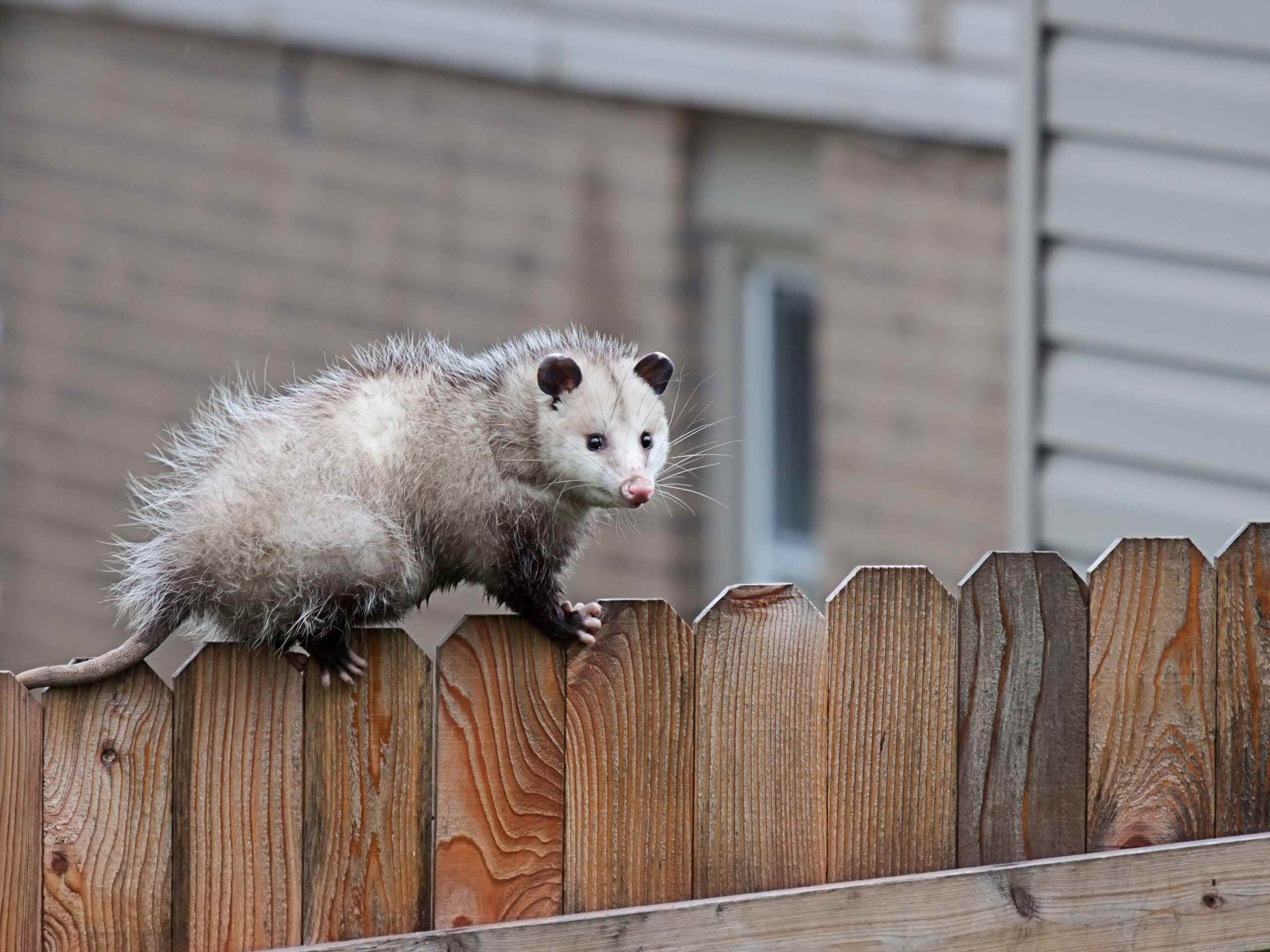Home>Gardening Tips and Tricks>How To Get Rid Of Raccoons In Backyard


Gardening Tips and Tricks
How To Get Rid Of Raccoons In Backyard
Modified: January 22, 2024
Learn effective problem-solving techniques to get rid of raccoons in your backyard. Protect your property and maintain a peaceful outdoor space.
(Many of the links in this article redirect to a specific reviewed product. Your purchase of these products through affiliate links helps to generate commission for Chicagolandgardening.com, at no extra cost. Learn more)
Table of Contents
Introduction
Welcome to our comprehensive guide on how to get rid of raccoons in your backyard. Raccoons are intelligent and adaptable creatures that can quickly become a nuisance, causing damage to property and even posing a threat to household pets. If you have noticed signs of raccoon activity around your home, it’s important to take the necessary steps to remove them and prevent future infestations.
Raccoons are known for their distinctive markings, including a black mask across their eyes and a ringed tail. They are mainly active at night, searching for food and shelter. These resourceful animals are excellent climbers and can easily access your backyard, making it essential to implement effective strategies to discourage their presence.
In this guide, we will provide you with practical tips and techniques to safely and humanely get rid of raccoons from your backyard. From identifying raccoon infestation to implementing preventative measures and employing removal methods, we aim to equip you with the knowledge and tools you need to reclaim your outdoor space.
It’s important to note that dealing with raccoons can be challenging, and the methods mentioned in this guide may take time and patience to yield results. Remember always to prioritize your safety when attempting to remove raccoons, as they can become aggressive if they feel threatened. If you’re not confident in your abilities or if the infestation is severe, it is recommended to seek professional assistance.
So, let’s dive in and discover effective solutions to keep raccoons away from your backyard and restore peace and tranquility to your outdoor living space.
Understanding Raccoons
To effectively deal with raccoon infestations in your backyard, it’s essential to understand their behavior and habits. Raccoons (Procyon lotor) are medium-sized mammals native to North America. They are known for their sharp intellect, dexterity, and adaptability, which enables them to thrive in various environments, including urban areas.
Raccoons have a stocky build and are characterized by their grayish-brown fur, black mask-like markings around their eyes, and their bushy, ringed tails. They have agile paws with sharp claws, making them excellent climbers and allowing them to access rooftops, trees, and garbage cans with ease.
These nocturnal creatures are opportunistic omnivores, meaning they eat both plants and animals. While their diet primarily consists of fruits, nuts, berries, and seeds, they are also known to consume small mammals, insects, eggs, and carrion. Raccoons are also attracted to human food sources, such as garbage and pet food, often leading them to venture into residential areas in search of sustenance.
Raccoons are highly adaptable and can establish their dens in various locations, including tree cavities, burrows, attics, chimneys, and crawl spaces. They are known to breed during the early spring, with females giving birth to litters of 2-5 kits. The kits remain dependent on their mother for several months before becoming independent.
Understanding raccoons’ behavioral patterns can help you anticipate their movements and take proactive measures to prevent them from entering your backyard or causing damage to your property. By knowing their preferences for food and shelter, you can eliminate attractants and create an environment that is less inviting to these curious critters.
It’s important to remember that raccoons are wild animals and should not be approached or handled by untrained individuals. If you encounter a raccoon in your backyard, maintain a safe distance and observe from afar. If you suspect a raccoon infestation, it’s best to enlist the assistance of wildlife professionals or animal control experts who are experienced in dealing with raccoon-related issues.
Identifying Raccoon Infestation
Identifying a raccoon infestation in your backyard is crucial in order to take appropriate measures to remove them. Here are some signs to look out for:
- Damaged property: Raccoons have strong jaws and sharp teeth, which they use to tear into garbage bags, dig up lawns in search of grubs, and damage plants. Look for signs of torn trash bags, upturned soil, or partially eaten plants.
- Footprints and tracks: Raccoons have distinctive footprints with five toes and long fingers. Their tracks are often visible in muddy areas or around trash cans. Additionally, look for smudges or markings left behind by their paws on surfaces like walls or windows.
- Noises at night: Raccoons are nocturnal animals and are most active during the nighttime. If you hear scratching, rustling, or chattering sounds coming from your attic, crawl space, or chimney, it could be a sign of raccoon activity.
- Droppings: Raccoon droppings, also known as scat, can be found in specific areas, such as near their dens, along fences, or on flat surfaces like decks and patios. Raccoon feces resemble small, cylindrical pellets and may contain visible traces of undigested food.
- Damage to bird feeders: Raccoons are known to raid bird feeders, as the seeds and nuts serve as an easy food source. Look for signs of bent or broken feeders or scattered birdseed on the ground.
- Visible raccoon activity: Spotting raccoons in your backyard, especially during the daytime, can indicate a larger infestation. Pay attention to their behavior and presence of multiple raccoons, as this could indicate a thriving population nearby.
If you notice any of these signs, it is important to take immediate action to prevent further damage and address the raccoon infestation. Remember to prioritize your safety and avoid direct contact with raccoons, as they may carry diseases such as rabies. Consider implementing the preventative measures and removal methods outlined in this guide or seek assistance from professionals who specialize in humane wildlife removal.
Preventative Measures
The best way to deal with raccoons is to prevent them from entering your backyard in the first place. By implementing the following preventative measures, you can reduce the likelihood of raccoon infestations:
- Remove attractants: Raccoons are drawn to easily accessible food sources, such as garbage, pet food, and fallen fruits. Securely store trash in bins with tight-fitting lids and bring them to the curb on the day of pickup. Keep pet food indoors and clean up fallen fruits or vegetables regularly.
- Secure trash bins: Invest in raccoon-proof trash bins that are designed to keep raccoons out. These bins often have lockable lids or heavy-duty latches that prevent raccoons from opening them.
- Install fencing and barriers: Fencing your yard can be an effective way to deter raccoons. Use sturdy materials like metal or heavy-gauge wire mesh to prevent raccoons from digging under or climbing over the fence. Additionally, consider installing electric fencing or baffles on trees to deter them from accessing your property.
- Seal entry points: Inspect your property for any potential entry points, such as gaps in the foundation, loose vents, or broken screens. Seal these openings with sturdy materials, such as steel mesh or hardware cloth, to prevent raccoons from accessing your home or other structures.
- Use repellents: There are various natural repellents available that can deter raccoons from entering your backyard. These include spray repellents with strong scents, like pepper or ammonia, or motion-activated sprinklers that startle and repel raccoons.
- Keep vegetation trimmed: Raccoons can use overhanging tree branches or dense vegetation as access points to your property. Regularly trim trees and shrubs, keeping branches at least 10 feet away from roofs and fences.
Implementing these preventative measures can greatly reduce the chances of raccoons infesting your backyard. However, it’s important to note that determined raccoons may still find their way into your property. In such cases, it may be necessary to employ removal methods to safely and effectively deal with the infestation. We will explore various removal methods in the following sections.
Removing Attractants
Removing attractants is an essential step in deterring raccoons from your backyard. By eliminating potential food sources, you can significantly reduce the appeal of your property to these curious creatures. Here are some strategies to help you remove attractants:
- Secure garbage: Raccoons are notorious for rummaging through garbage for food. Ensure that your trash cans have tight-fitting lids and are securely fastened to prevent raccoons from accessing them. Consider using bungee cords or weighty bin straps to further secure the lids.
- Don’t leave pet food outside: If you have pets that eat outdoors, be sure to feed them at designated times and promptly remove any uneaten food. Leaving pet food outside can attract raccoons and other wildlife to your property.
- Harvest fruits and vegetables promptly: Raccoons are attracted to fallen fruits and vegetables in your garden. Regularly inspect your garden and promptly harvest ripe produce to prevent it from becoming a raccoon buffet.
- Eliminate bird feeders: Although bird feeders are lovely for attracting feathered friends, they also entice raccoons. Consider removing bird feeders or hang them in a way that is inaccessible to raccoons, such as on baffles or at a height the raccoons cannot reach.
- Seal compost bins: Raccoons are attracted to compost bins due to the potential food sources available. Make sure your compost bins are tightly sealed to prevent raccoons from gaining access. Avoid adding meat, fish, or oily food scraps to your compost, as these odors can attract raccoons.
- Remove fallen nuts and berries: Raccoons are also drawn to fallen nuts and berries from trees around your property. Regularly clean up fallen nuts, berries, and other food debris to minimize the appeal to raccoons.
By removing these attractants, you are sending a clear message to raccoons that your backyard is not a reliable source of food. Consistency and diligence are crucial in maintaining a raccoon-free environment. It may take time before raccoons realize there are no longer desirable food sources available on your property, so be patient and persistent with your efforts.
Remember, prevention is key when it comes to raccoon control, and by reducing the attractiveness of your backyard, you can significantly reduce the chances of raccoon infestations. However, if you already have raccoons in your backyard, you may need to employ additional removal methods to address the existing infestation. We will explore these methods in the following sections.
Securing Trash Bins
Raccoons are notorious for their ability to raid trash bins in search of food. Securing your trash bins is a crucial step in deterring raccoons from your property. Here are some effective methods to help you secure your trash bins:
- Invest in raccoon-proof bins: Consider purchasing trash bins specifically designed to be raccoon-proof. These bins usually have lockable lids or heavy-duty latches that prevent raccoons from easily opening them. Look for bins made of sturdy materials that can withstand raccoon attempts to pry them open.
- Use bungee cords or straps: If raccoon-proof bins are not an option, you can secure your regular trash bins with bungee cords or heavy-duty straps. Wrap the cord or strap tightly around the lid and the body of the bin to prevent raccoons from lifting the lid. Ensure that the cord or strap is fastened securely, making it difficult for raccoons to dislodge the lid.
- Apply deterrents on bins: There are various deterrents available that can be applied to your trash bins to discourage raccoons. For instance, you can spray a mixture of water and a strong-scented substance like ammonia or vinegar on the bin or around its perimeter. Raccoons are sensitive to strong odors and will be deterred by these scents.
- Store bins in a secure area: If possible, keep your trash bins in a secure area, such as a garage, shed, or fenced enclosure. This can help prevent raccoons from accessing the bins altogether and reduce the likelihood of them being attracted to your property.
- Limit exposure time: To further reduce the chances of raccoon encounters, avoid placing your trash bins outside any earlier than the night before garbage pickup. Raccoons are mainly nocturnal, so minimizing the amount of time the bins are available for raccoons to investigate can be helpful.
- Establish a cleaning routine: Regularly clean your trash bins to remove any residual odors that may attract raccoons. Use a mixture of water and a mild detergent to thoroughly clean the bins, and ensure they are completely dry before closing the lids.
By implementing these measures, you can significantly reduce the likelihood of raccoons accessing your trash bins and causing a mess in your backyard. Discouraging raccoons from finding a food source in your trash bins is an important step in overall raccoon control. Remember to remain consistent with your efforts and regularly inspect the bins to ensure they are secure.
However, if you still find raccoons are able to breach your defenses or if you are dealing with a severe raccoon infestation, you may need to explore additional methods for trapping and removing the raccoons. We will cover these methods in the following sections.
Fencing and Barriers
Fencing your backyard can be an effective way to prevent raccoons from accessing your property. By creating physical barriers, you can deter raccoons and minimize the chances of them entering your yard. Here are some strategies for using fencing and other barriers:
- Choose the right fence: When selecting a fence to deter raccoons, opt for materials that are difficult for them to climb or dig under. Solid wood fences, chain-link fences with the bottom edge buried at least a foot underground, or metal fences with smooth surfaces can be effective options.
- Consider electric fencing: Electric fencing can be an effective deterrent for raccoons. It provides a mild, non-lethal shock that discourages raccoons from attempting to climb or breach the fence. Ensure the electric fencing is installed according to manufacturer instructions and is placed at a suitable height to prevent raccoons from jumping over it.
- Install baffles on trees: If you have trees near your property that raccoons may use to access your yard, install baffles around the trunks. Baffles are cylindrical metal or plastic devices that wrap around the tree trunk and prevent raccoons from climbing up. Ensure the baffles are smooth and tall enough to prevent raccoons from reaching over or bypassing them.
- Create an overhang: Raccoons can climb fences by using nearby trees or structures as launch points. Create an overhang by extending the top of the fence at a 45-degree angle inward. This prevents raccoons from easily climbing over the top of the fence.
- Use motion-activated sprinklers: Installing motion-activated sprinklers around the perimeter of your yard can startle raccoons and discourage them from approaching. The sudden burst of water can be an effective deterrent for these curious creatures.
- Eliminate potential climbing aids: Remove objects such as ladders, stacked firewood, or furniture that raccoons could use to climb over fences or gain entry to your yard.
Remember, the effectiveness of fencing and barriers will depend on various factors, such as the intelligence and determination of the raccoons in your area. It’s important to regularly inspect fences and barriers for any weaknesses or potential entry points that raccoons may exploit. Maintain a vigilant approach and make any necessary repairs or adjustments promptly.
By implementing these fencing and barrier strategies, you can create a physical deterrent that makes it more difficult for raccoons to access your yard. However, if raccoons are still finding a way into your property or you are dealing with a severe infestation, you may need to consider additional methods for trapping and removing the raccoons, which we will explore in the following sections.
Sealing Entry Points
Sealing entry points is a crucial step in preventing raccoons from accessing your property. Raccoons are skilled climbers and can find their way into small openings or weak spots in buildings or fences. By identifying and sealing potential entry points, you can effectively block the raccoons’ access to your yard. Here are some steps to help you seal entry points:
- Inspect your property: Conduct a thorough inspection of your property, including your home, outbuildings, fences, and other structures. Look for any gaps, holes, or openings that raccoons could use to gain entry. Pay close attention to areas around vents, chimneys, pipes, and utility lines.
- Repair damaged structures: If you notice any damaged areas, such as loose vents, broken screens, or gaps in the foundation, repair them promptly. Use sturdy materials like steel mesh, hardware cloth, or metal flashing to seal these openings.
- Close off crawl spaces and attics: Raccoons are known to establish their dens in crawl spaces and attics. Ensure that these areas are properly secured by sealing openings, installing tight-fitting vent covers, and repairing any damaged or weak areas.
- Seal gaps around pipes and utility lines: Raccoons can squeeze through surprisingly small openings. Use expanding foam or caulking to seal gaps around pipes, utility lines, and other penetrations in your home or outbuildings.
- Install chimney caps and vent covers: Raccoons can enter your home through chimneys or vents. Install chimney caps and secure vent covers with strong material to prevent raccoons from entering through these openings.
- Trim tree branches near structures: Raccoons may gain access to your property by climbing tree branches and jumping onto your roof. Trim tree branches at least 10 feet away from your home or other structures to limit their access points.
It’s important to be thorough and meticulous when sealing entry points, as raccoons can be persistent in finding alternative ways to get in. Regularly inspect the sealed areas to ensure they remain intact and make any necessary repairs promptly.
Remember, raccoons are agile creatures and can be relentless in their pursuit of shelter or food. If you discover that raccoons are still managing to enter your property despite your efforts to seal entry points, you may need to consider additional removal methods, which we will explore in the following sections.
Using Repellents
Repellents can be effective tools for deterring raccoons from your backyard. These substances emit strong scents or create uncomfortable sensations that discourage raccoons from approaching your property. Here are some repellents and techniques you can use to keep raccoons away:
- Spray repellents: Spray repellents with strong odors can be used to create a barrier around your property. Look for repellents that contain ingredients like pepper, ammonia, or predator urine. Apply the repellent around potential entry points, trash bins, and areas where raccoons frequent.
- Ultrasonic devices: Ultrasonic devices emit high-frequency sounds that are unpleasant to raccoons and can deter them from approaching your property. Install these devices strategically around your backyard, ensuring they cover the areas frequented by raccoons.
- Motion-activated sprinklers: Motion-activated sprinklers are an effective way to startle raccoons and discourage them from entering your yard. When a raccoon crosses the sensor’s path, it triggers the sprinkler to release a blast of water, startling the raccoon and encouraging it to flee.
- Natural deterrents: Certain substances and plants are known to repel raccoons. For example, cinnamon, peppermint oil, and vinegar have strong odors that can deter raccoons. You can sprinkle these substances in areas where raccoons are a problem or create a barrier around your property using cotton balls soaked in the repellent.
- Predator decoys: Placing decoys or models of natural predators, such as owls or coyotes, in your yard can create the illusion that there is a threat present, deterring raccoons from approaching. Rotate the decoys occasionally to maintain their effectiveness.
- Light and noise: Raccoons prefer dark and quiet environments. By installing motion-activated lights or playing soft music or talk radio near areas of raccoon activity, you can create an environment that is less appealing to them.
It’s important to note that while repellents can be effective, their success may vary depending on individual raccoon behavior. Some raccoons may become accustomed to certain repellents over time. Therefore, it may be necessary to rotate between different repellents or combine multiple methods for maximum effectiveness.
When using repellents, be sure to follow the manufacturer’s instructions and consider the safety of other animals and pets in the vicinity. If you have concerns about using chemical repellents or are unsure about their effectiveness, consult with wildlife professionals or pest control experts who can provide guidance tailored to your situation.
If repellent methods are not yielding the desired results or if you are dealing with a severe raccoon infestation, you may need to consider trapping and removing the raccoons. We will explore these methods in the following sections.
Trapping and Removal
If preventive measures and repellents have failed to address a raccoon infestation in your backyard, trapping and removal may be necessary. It’s important to note that trapping should be approached with caution and preferably conducted by professionals, as raccoons can become aggressive when cornered or feel threatened. Here are some key considerations and methods for trapping and removing raccoons:
- Check local regulations: Before implementing any trapping methods, check your local regulations regarding raccoon trapping and removal. Some areas may have specific guidelines and permits for humane trapping and relocation.
- Choose an appropriate trap: Select a raccoon-sized live trap that is humane and designed to catch raccoons safely. These traps are typically wire cages with one entrance door and a trigger mechanism that releases the door once the raccoon enters the trap.
- Bait the trap: Use suitable bait, such as cat food, marshmallows, or sweet fruits, to entice the raccoon into the trap. Place the bait at the far end of the trap, ensuring that it is set securely and cannot be easily removed by the raccoon without triggering the trap.
- Select an appropriate trapping location: Place the trap in an area where raccoons are frequently seen or have shown signs of activity. Consider placing it near raccoon entry points or along their regular pathways.
- Monitor the trap: Regularly check the trap, preferably every few hours, to ensure that any trapped raccoons do not experience unnecessary stress or harm. Once a raccoon is trapped, handle the situation carefully and avoid direct contact with the raccoon.
- Release or relocate the raccoon: Depending on local regulations, you may be required to release the raccoon on-site or relocate it to a suitable area far away from human habitation. It is essential to follow the proper guidelines and procedures when releasing or relocating raccoons.
- Consult professionals: It is recommended to consult with professionals, such as wildlife control companies or local animal control agencies, if you are unsure about trapping or removal processes. They have the experience and knowledge to handle raccoon infestations safely and effectively.
Remember, trapping and removal should be conducted with the welfare of both the raccoons and humans in mind. It’s crucial to approach raccoon trapping and removal with caution and prioritize the safety of everyone involved. If you are uncertain or uncomfortable with trapping raccoons, seeking professional assistance is the best course of action.
Raccoon trapping and removal should only be considered as a last resort when other methods have proven ineffective or in cases where the infestation poses a significant risk to your property or safety. Always respect wildlife and strive to find humane solutions whenever possible.
Please familiarize yourself with local regulations and guidelines and follow them when implementing trapping and removal methods. By doing so, you can address the raccoon infestation and restore harmony to your backyard.
Seeking Professional Help
If you are dealing with a persistent or severe raccoon infestation in your backyard, or if you are uncomfortable handling the situation on your own, seeking professional help is highly recommended. Wildlife control professionals and animal removal experts have the expertise and experience to effectively and safely handle raccoon infestations. Here are some reasons why you should consider seeking professional assistance:
- Expertise and knowledge: Professionals specializing in wildlife control have in-depth knowledge of raccoon behavior, habits, and effective removal techniques. They can accurately assess the extent of the infestation and devise a customized plan to address the issue efficiently.
- Safety concerns: Raccoons can become aggressive and pose risks if they feel threatened or cornered. Professionals are trained in handling raccoons safely, minimizing the chances of injury or harm to both humans and the raccoons.
- Humane removal methods: Professionals prioritize the use of humane removal methods to ensure the well-being of the raccoons. They adhere to local regulations and guidelines for trapping, relocation, and euthanasia, if necessary.
- Dealing with complex infestations: In cases where raccoon infestations are extensive or involve multiple entry points, professionals have the skills and equipment to handle complex situations. They can identify and seal entry points effectively, preventing future infestations.
- Preventing property damage: Raccoons can cause significant damage to property, including structural damage, contamination, and destruction of gardens. Professionals can help mitigate and prevent further damage, saving you potential repair costs.
- Legal compliance: Wildlife control professionals are well-versed in local regulations and permits required for raccoon removal. They can ensure the process is carried out legally and ethically, avoiding any potential issues and legal complications.
When seeking professional help, it’s important to choose a reputable wildlife control company or animal removal service. Research and compare different companies, read reviews, and inquire about their approach to raccoon removal. Ensure they are licensed, bonded, and insured to protect yourself and your property.
Remember, professional assistance is particularly valuable when dealing with persistent or challenging raccoon infestations. Their expertise and resources can effectively address the issue, providing long-term solutions and peace of mind.
Be sure to communicate openly with the professionals about your concerns, any previous attempts you’ve made, and any specific requirements or preferences you have. This will help them tailor their approach to your unique situation.
By seeking professional help, you can efficiently and effectively resolve the raccoon infestation, ensuring the safety of everyone involved and minimizing the impact on your property.
Conclusion
Dealing with a raccoon infestation in your backyard can be a frustrating and challenging experience. These intelligent and adaptable creatures can cause damage to your property and pose potential risks to your family and pets. However, by taking proactive measures and implementing effective strategies, you can successfully get rid of raccoons and prevent future infestations.
In this comprehensive guide, we have explored various methods to address raccoon infestations. We discussed the importance of understanding raccoon behavior, identifying signs of infestation, and implementing preventative measures. Removing attractants, securing trash bins, using fencing and barriers, sealing entry points, and utilizing repellents can all play a crucial role in deterring raccoons from your property.
In some cases, trapping and removal may be necessary when other methods have proven ineffective. It is crucial to approach trapping with caution and preferably seek the assistance of professionals who have the knowledge and experience to handle the situation safely and humanely. Additionally, professional help is highly recommended for complex infestations, ensuring compliance with local regulations and minimizing property damage.
Remember, prevention is key when it comes to raccoon control. By implementing these strategies and maintaining vigilance, you can create an environment that is less inviting to raccoons, reducing the likelihood of infestations in the future.
Lastly, always prioritize your safety and the well-being of raccoons. Treat these animals with respect and handle them cautiously. If you are uncertain or uncomfortable dealing with raccoons on your own, it is best to seek professional assistance.
We hope that this guide has provided you with valuable insights and practical solutions for getting rid of raccoons in your backyard. By implementing these techniques and seeking the appropriate assistance, you can reclaim your outdoor space and enjoy a raccoon-free environment once again.
